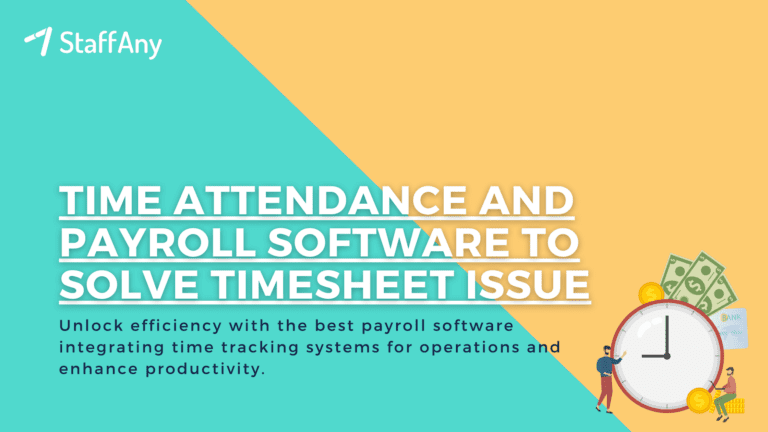Are you looking for how to calculate salary per day? Calculating salary per day indeed can be a crucial task for HR professionals, especially when it comes to calculating the salaries of employees who have joined or resigned mid-month or part-timers.
In this article, we will discuss what is salary, how salary per day is calculated and in an incomplete month, as well as the relevant Malaysian labour laws that regulate the salary. Let’s find out below!
What is Salary?
Salary is a fixed regular payment or compensation paid by an employer to an employee in exchange for the work or services performed. It is typically expressed as an annual sum and is often paid on a monthly basis, although there are variations in payment frequencies depending on the employer’s policies and the employment contract.
Salaries are common in professional, managerial, and administrative positions where employees are expected to work a set number of hours each week or month. Unlike hourly or monthly wage workers, salaried employees are usually not paid based on the number of hours worked, but they receive a consistent amount regardless of the actual hours worked, as long as they fulfill their job responsibilities.
Salaries can vary widely based on factors such as the level of education, experience, skills, job responsibilities, industry, location, and the overall economic conditions of the region or country. Salary packages may also include additional benefits such as bonuses, health insurance, retirement plans, and paid time off.
It’s important to note that salary is just one form of compensation, and there are various other ways employees can be compensated, including hourly wages, commissions, tips, and stock options, among others. The specific terms of employment, including the salary and benefits, are typically outlined in an employment contract between the employer and the employee.
Read more: Basic Salary in Malaysia and Its Regulations
The Difference between Salary and Wages
The terms “salary” and “wages” both refer to the compensation paid to employees, but there are distinct differences between the two:
1. Salary
a. Fixed Amount
Salary is a fixed amount of money paid to employees on a regular basis, often monthly. Regardless of the number of hours worked, salaried employees receive the same amount each pay period.
b. Professional, Managerial, and Administrative Positions
Salaried positions are typically associated with professional, managerial, or administrative roles. Employees in these positions are often expected to work a standard number of hours per week or month, but their compensation is not directly tied to the number of hours worked.
c. Exempt from Overtime
Salaried employees are often considered exempt from overtime regulations, meaning they are not entitled to receive overtime pay for working more than the standard workweek hours.
Examples: Doctors, engineers, managers, and office administrators are often paid a salary.
2. Wages
a. Hourly Rate
Wages are paid on an hourly basis. Employees are compensated based on the number of hours they work. If they work more hours, they earn more money; if they work fewer hours, they earn less.
b. Hourly or Part-Time Positions
Wages are commonly associated with hourly or part-time positions where employees are paid for the specific hours they work. These positions often do not require specialized skills or higher education.
c. Overtime Pay
Hourly employees are usually eligible for overtime pay, which is a higher hourly rate for any hours worked beyond the standard workweek (typically 40 hours per week) as mandated by labor laws.
Examples: Retail workers, factory workers, and customer service representatives are often paid hourly wages.
In summary, the primary differences between salary and wages lie in the way employees are compensated (fixed amount vs. hourly rate), the types of positions associated with each form of compensation (professional and managerial roles vs. hourly or part-time positions), and the eligibility for overtime pay (exempt from overtime vs. eligible for overtime).
Read more: The Average Salary in Malaysia and Its Regulations
Salary and Wages in Malaysian Labour Law

In Malaysia, the Employment Act 1955 governs the minimum terms and conditions of employment for employees who are engaged under a contract of service. Under the Act, an employee is entitled to a minimum wage of RM1,200 per month in Peninsular Malaysia and RM1,100 per month in Sabah, Sarawak, and Labuan.
In addition, employees who work on a daily, hourly, or piece-rate basis must be paid at least the minimum wage rate applicable to their respective states. Failure to comply with the minimum wage requirements can result in legal action against the employer.
Read more: Understanding SOCSO Employer Contribution: An Overview
The Minimum Wages Order 2022
Starting 1 May 2022, the Malaysian Minimum Wages Order 2022 has taken effect and raised the minimum monthly salary of workers to RM 1,500. The Order applies to all workers except domestic helpers, but there is a temporary exception for employers who have less than 5 employees until 31 December, 2022. This exemption, however, does not apply to employers engaged in professional activities.
Malaysia’s minimum wage policy itself is determined under the National Wages Consultative Council Act 2011 (Act 732). The National Wages Consultative Council, which is a tripartite body, is established to suggest the minimum wage rate to the government.
After the government gives its approval, the Minister of Human Resources issues a Minimum Wages Order.
The Minimum Wages Order was first introduced in 2012 and became effective on 1 January 2013. Then, it established the minimum wage rates for workers in West Malaysia at RM 900 per month and RM 4.33 per hour, and for those in East Malaysia at RM 800 per month and RM 3.85 per hour.
Prior to the Minimum Wages Order, Malaysia had the Wages Council Act 1947, which aimed to establish a standard for low-wage workers’ salaries. However, the act suffered from several drawbacks, such as infrequent revisions to the wage rate and lengthy and complicated processes.
Through the implementation of the Minimum Wages Order and the National Wages Consultative Act, the government now regularly evaluates the minimum wage every two years to ensure that workers receive appropriate compensation relative to the state of the economy.
Read more: A Complete Guide to Employee Benefits in Malaysia
How to Calculate Salary per Day

Calculating salary per day can be useful in various situations, such as determining prorated salaries for employees who join or resign mid-month or calculating the salary for a temporary employee who is paid on a daily basis.
The formula for calculating salary per day is:
(Salary ÷ Number of working days in a month)
For example, if an employee’s monthly salary is RM3,500, and the company operates for 22 days in a month, the salary per day would be calculated as follows:
(3,500 ÷ 22) = RM159.09 per day
It’s important to note that the number of working days in a month can vary depending on the company’s policies and practices. Some companies may consider weekends as working days, while others may only count weekdays. Therefore, it’s crucial to clarify the number of working days in a month before calculating the salary per day.
It’s also worth noting that if an employee takes unpaid leave or is absent from work for any other reason, their salary per day would be prorated accordingly. For instance, if an employee takes two days of unpaid leave in a month, the number of working days in the month would be reduced to 20, and the salary per day would be recalculated as follows:
(3,500 ÷ 20) = RM175 per day
Read more: Read more: Graveyard Shift: Meaning, Advantages, and Disadvantages
How to Calculate Salary in an Incomplete Month
Calculating the salary for an incomplete month can be tricky, especially if an employee joins or resigns mid-month. In such cases, the salary should be prorated based on the number of days the employee has worked.
The formula for calculating an incomplete month’s salary is as follows:
(Salary ÷ Number of days in the month) x Number of days worked
For example, if an employee joins on the 15th of the month, and their monthly salary is RM4,000, the incomplete month’s salary would be calculated as follows:
(4,000 ÷ 31) x 17 = RM2,193.55
It’s important to note that the number of days in the month can vary, depending on whether it’s a 28, 29, 30, or 31-day month. Therefore, it’s crucial to clarify the number of days in the month before calculating the incomplete month’s salary.
Similarly, if an employee resigns before the end of the month, their salary should be prorated based on the number of days they have worked. For example, if an employee resigns on the 20th of the month and their monthly salary is RM4,500, the incomplete month’s salary would be calculated as follows:
(4,500 ÷ 31) x 20 = RM2,160.97
It’s important to note that the formula for calculating an incomplete month’s salary can also be used to calculate the salary for employees who take unpaid leave for a specific number of days in a month. For instance, if an employee takes three days of unpaid leave in a 30-day month, their salary for the month would be prorated based on the remaining 27 days.
It’s also worth noting that employees who work on a daily basis should be paid based on the number of days they have worked in the month, regardless of whether it’s a complete or incomplete month. In such cases, the salary per day formula discussed earlier can be used to calculate their salary.
Read more: A Comprehensive Guide on Shift Work Schedule Management in the F&B Industry
Calculating salary per day and incomplete month salary can be a daunting task for HR professionals, especially if they are dealing with complex scenarios such as mid-month joiners or resignations.
However, by understanding the relevant labour laws and using the right formulas, HR professionals can ensure that they calculate salaries accurately and in compliance with the law.
Moreover, it’s essential to clarify the company’s policies and practices regarding the number of working days and days in the month to avoid any confusion or disputes.
Looking for an easier way to manage your staff roster and calculate salaries accurately? Check out StaffAny – the leading staff roster app in Malaysia. With StaffAny, you can easily schedule shifts, track attendance, and calculate salaries for your employees.
Say goodbye to manual rostering and complicated calculations, and hello to a streamlined, hassle-free process. Try StaffAny today and experience the benefits of modern rostering software. Contact us to get started!











